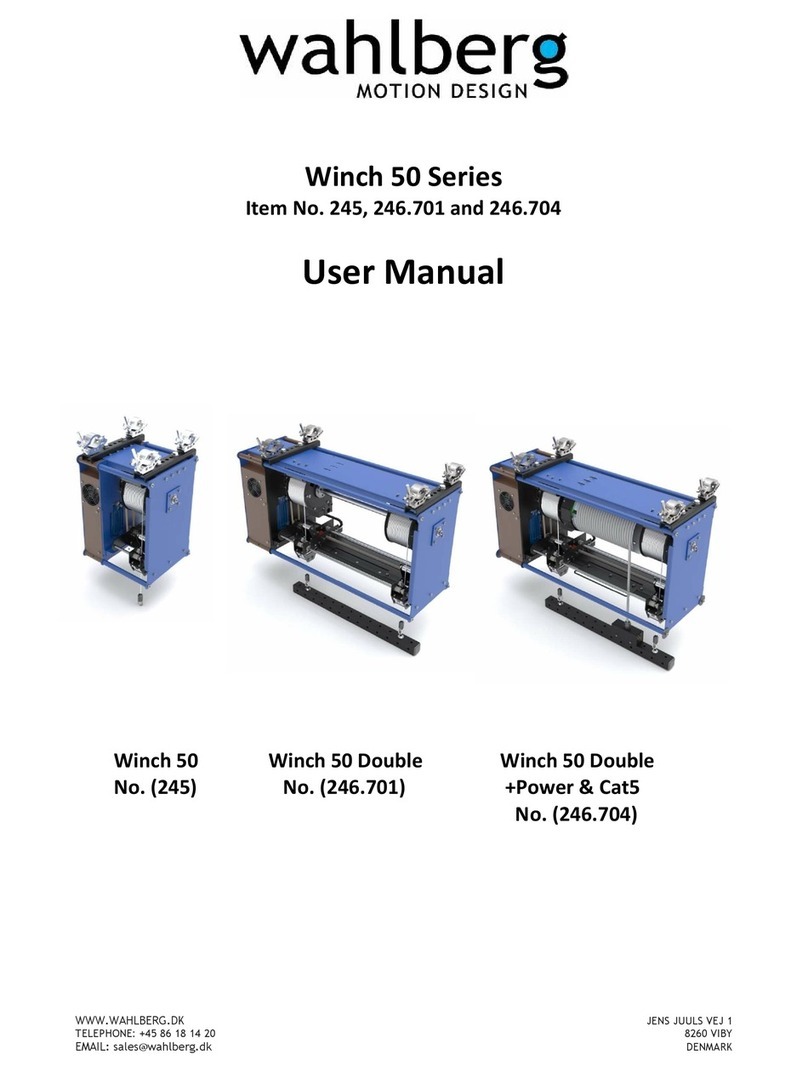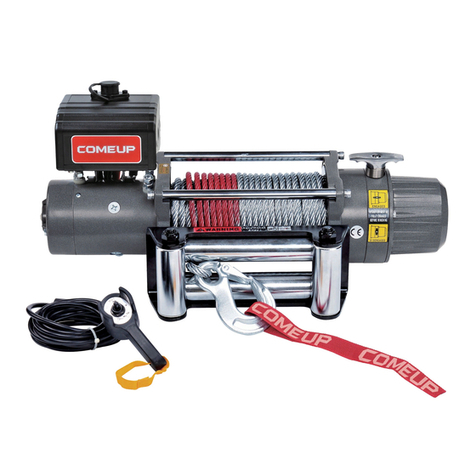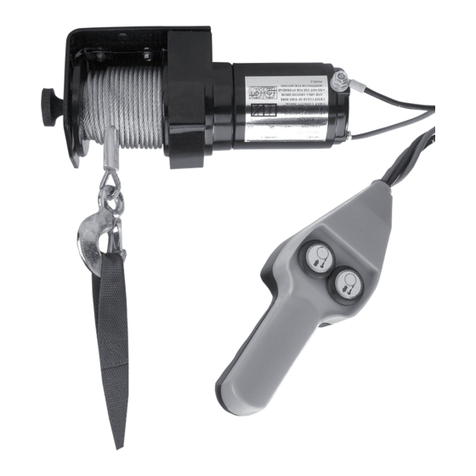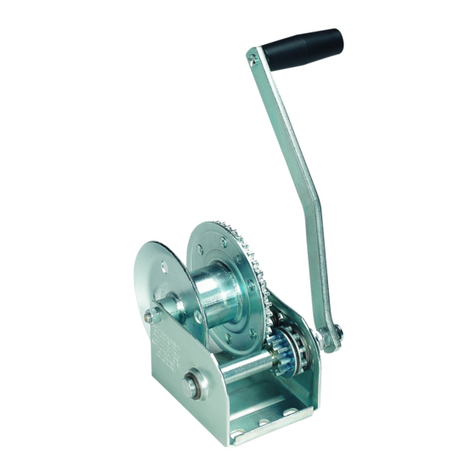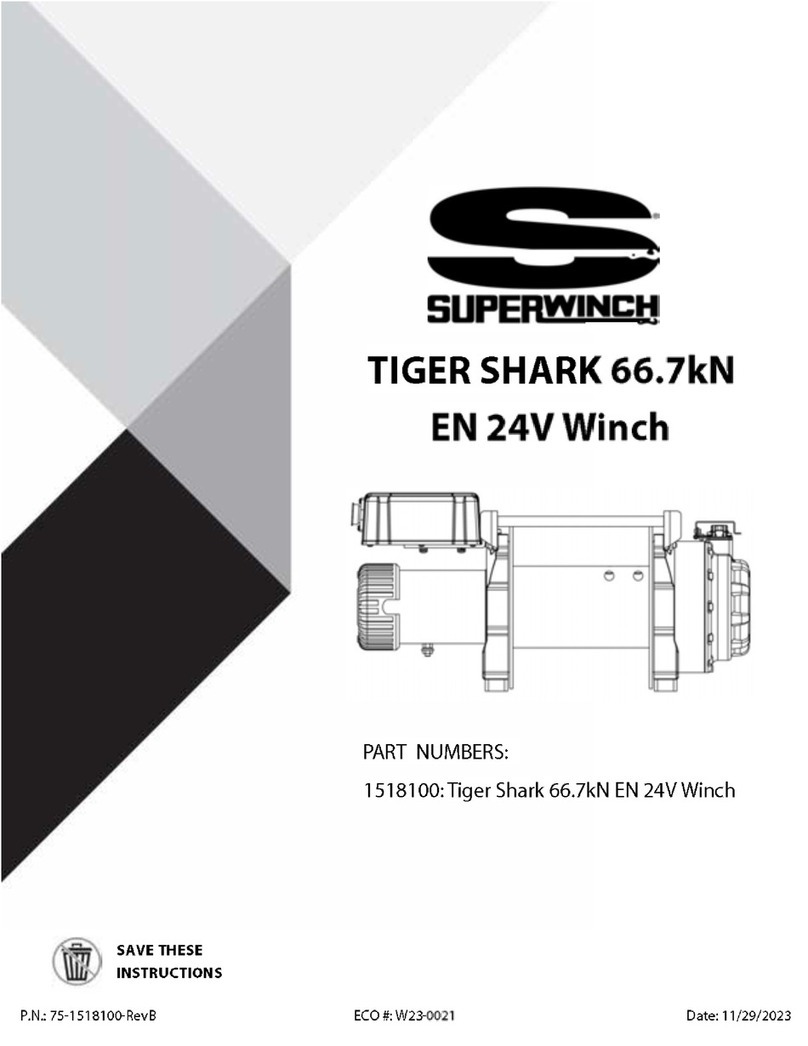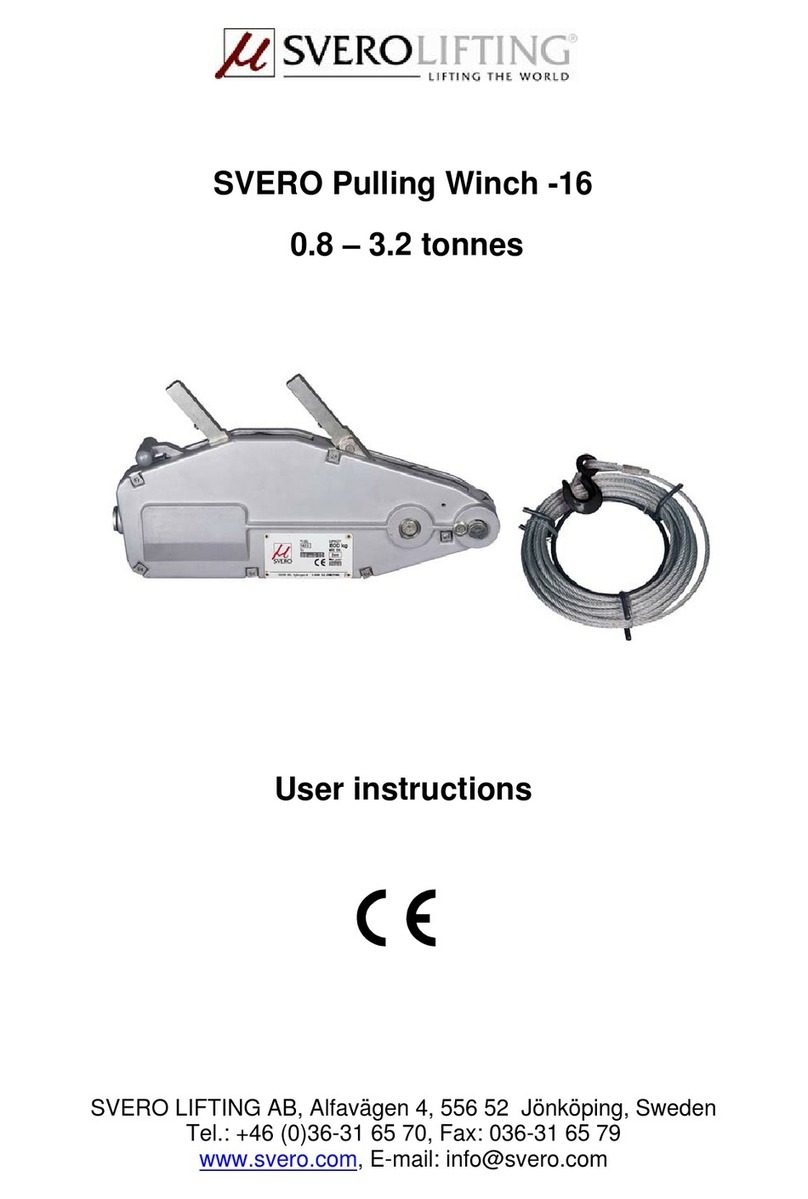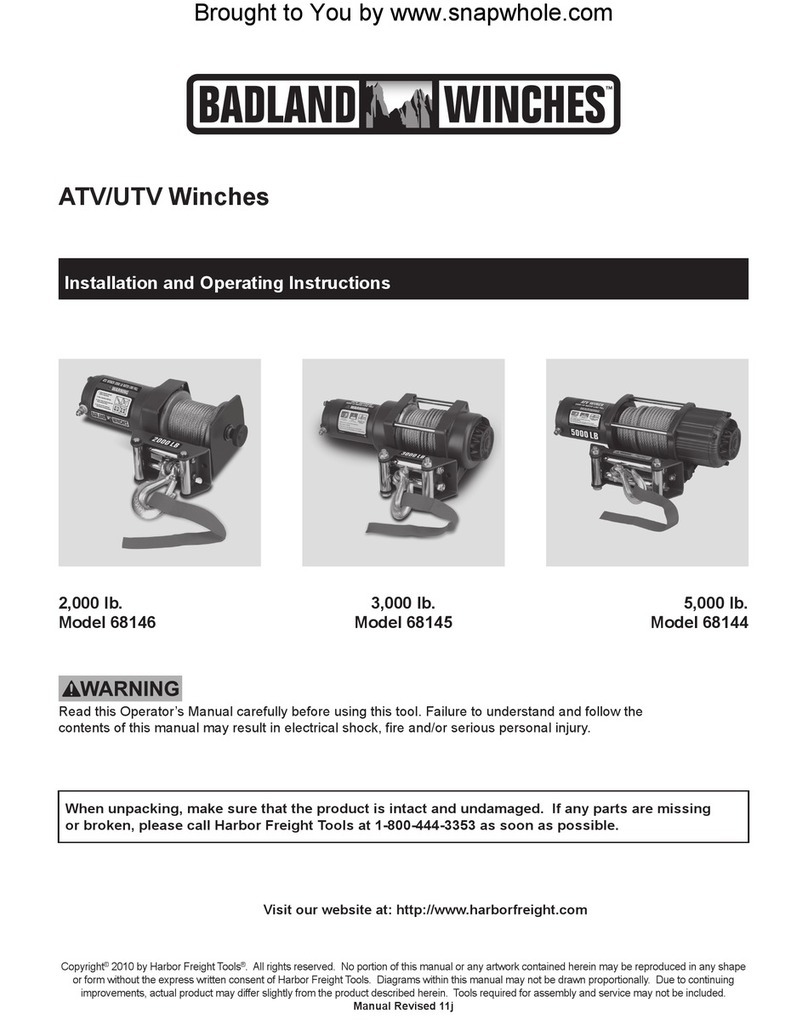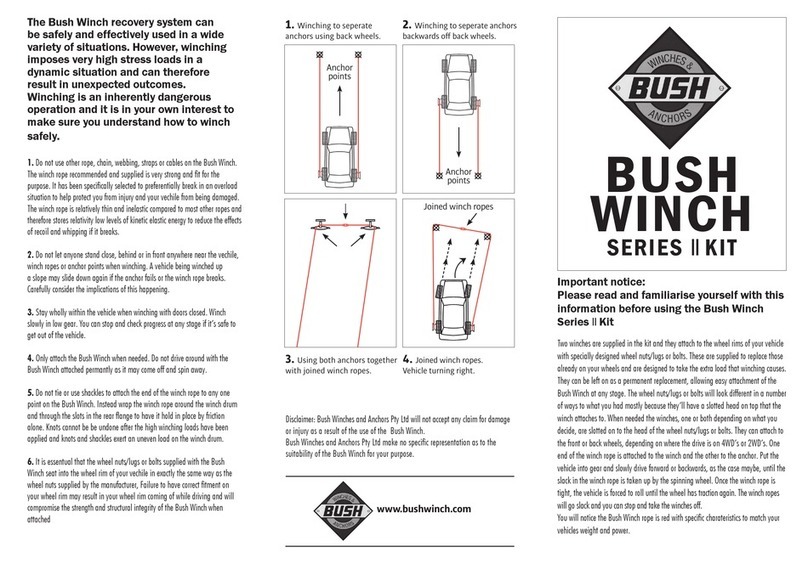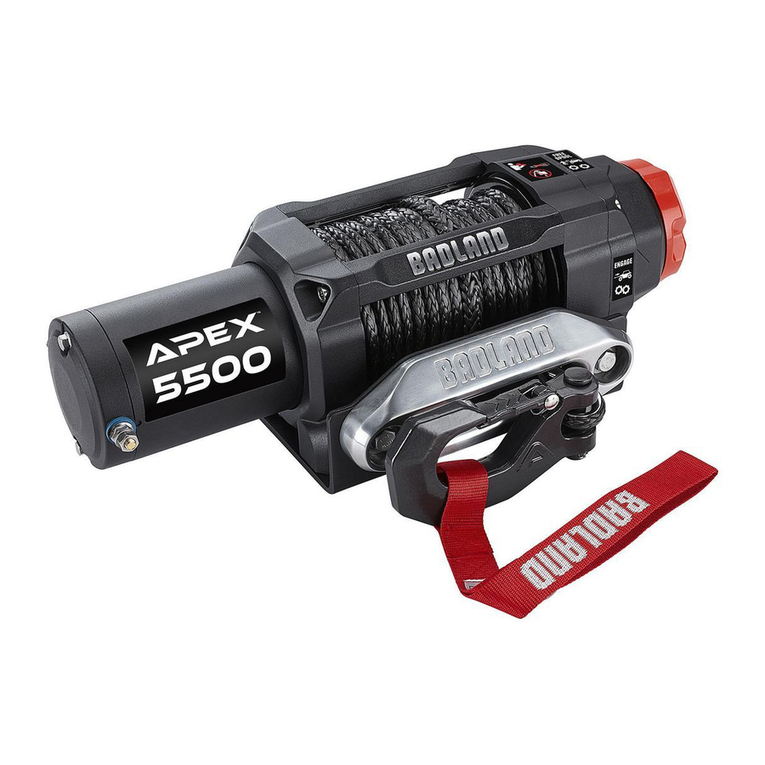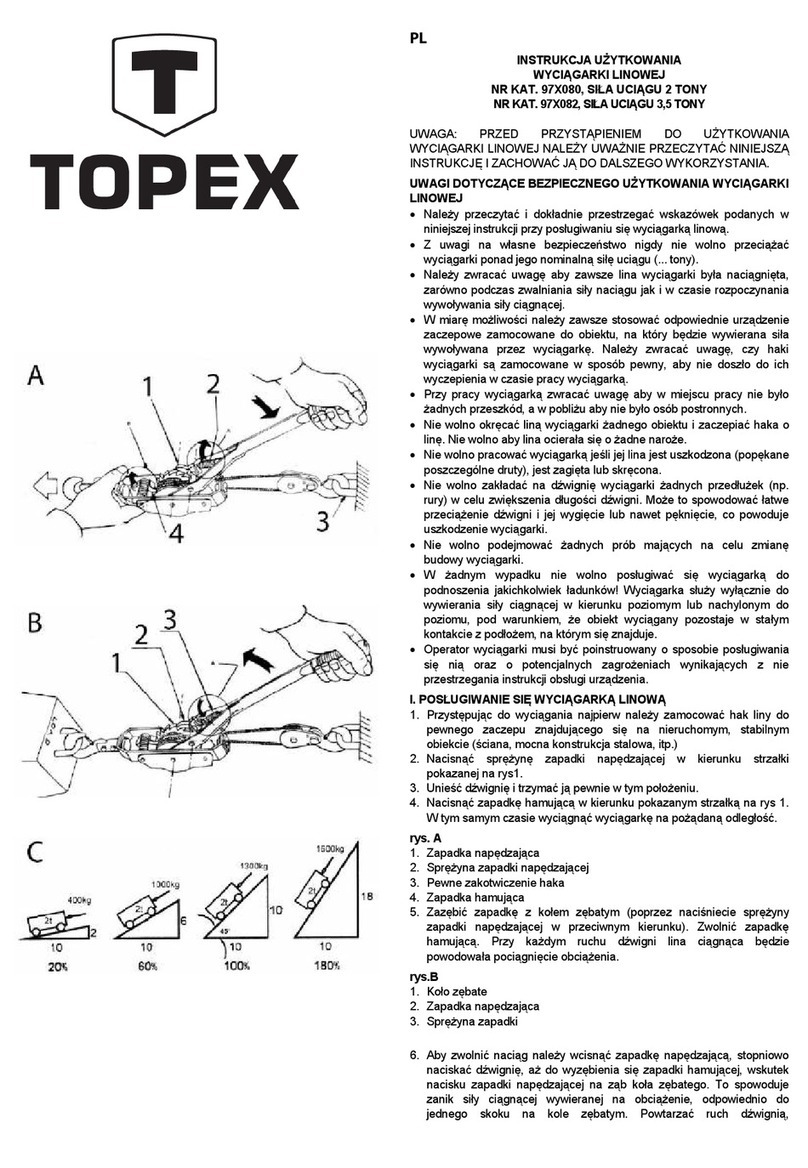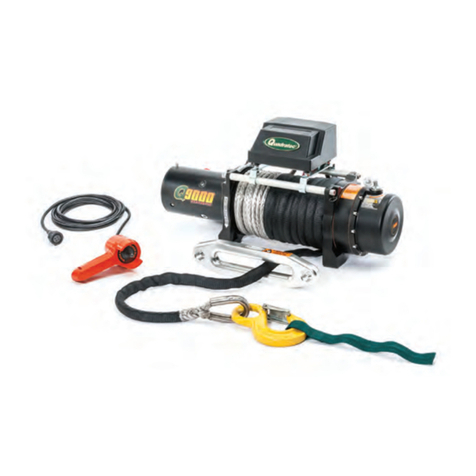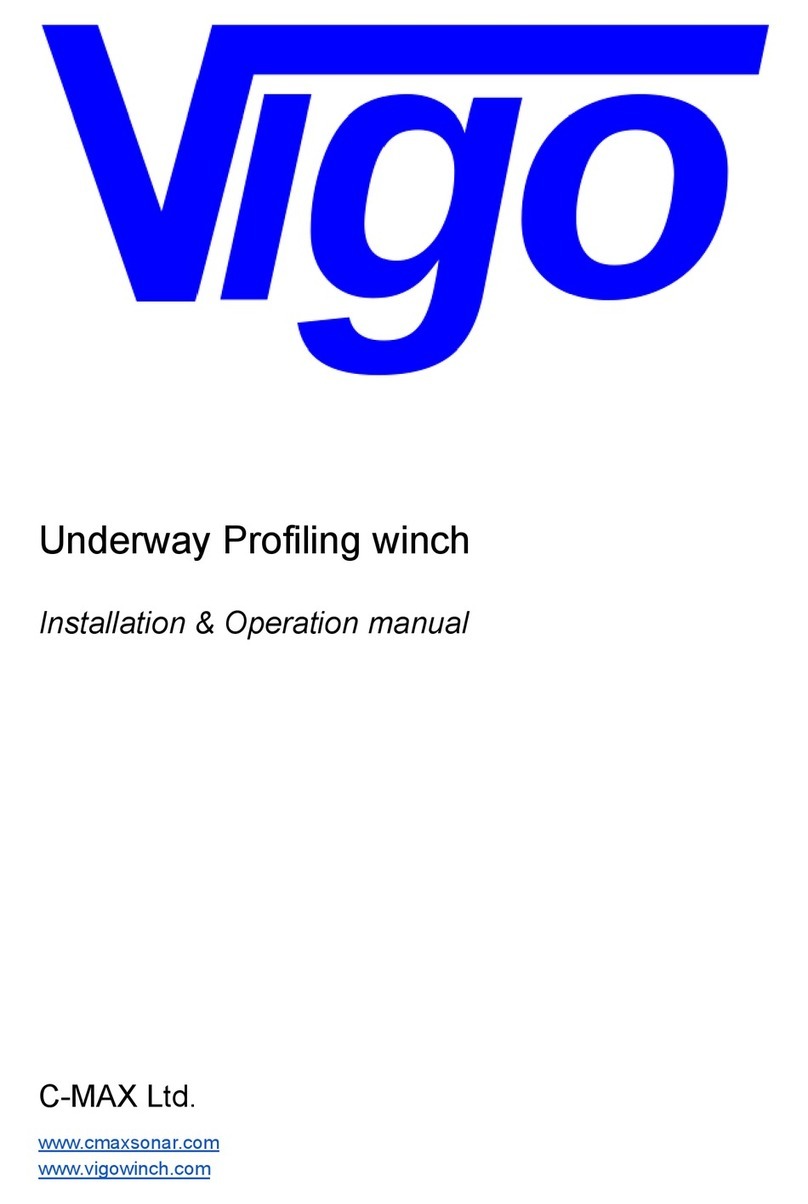9
805.241.009 Date: October 14, 2016
Recalibrating overload
The winch comes with overload calibrated to 11kg which means that overload will occur when
loads above 10kg is used on the winch.
If you want to calibrate the overload for something different hang the winch with at least 1m
clearance below it, and hang the desired overload threshold weight + 1kg on the winch (max 11kg
total) Set the DMX channels to 999
Then set mode to 9
The winch will now run down and try to move up a number of times. When the winch has moved to
the start top position again the overload has been set and the MODE and DMX channel should be
changed away from 999 9.
MODE functions:
Each MODE setting has a given function. Each mode gives an opportunity for different run
settings with the winch.
The winch needs to be reset, before the positioning mode is possible. The winch can be reset
manually or automatically. The winch must be reset each time its power supply has been
disconnected. Read the passage about controlling the top- and bottom-positions, to explore
and setup the winch best for your own particular need.
MODE 1:
Positioning with AUTO reset.
The winch resets automatically and thereby also sets the top-position automatically. The
winch runs up until the snap hook reaches the motor-house and stops. Because of this, the top-
positions in this MODE will always be at the motor-house. To start the automatic resetting,
speed must be added on the speed-channel (DMX channel 3).
When the winch has been reset, it is possible to use it in positioning mode.
MODE 2:
Positioning with MANUAL reset.
The winch is manually reset on the DMX channels 6 or 7. The top-position is, because of this,
also set manually, which makes it possible to decide the position of the top-position.
We suggest anyway that it is set near by the motor-house.
When the winch is being reset, it is important to decrease the speed, as the snap hook is
closing in on the motor-house, otherwise the wire and winch can be damaged.
When the winch has been reset, it is possible to use it in positioning mode.
MODE 7:
Manual run up (no DMX needed)
The winch runs up with the speed set on the DMX-selectors. This function can be used as a
test-function or in association with on- and off-applying of wire.
E.g. Set the winch to MODE 7 and the DMX address to 100, for a slow movement, or set the
DMX address to 500 for fast movement.
MODE 8:
Manual run down (no DMX needed)








